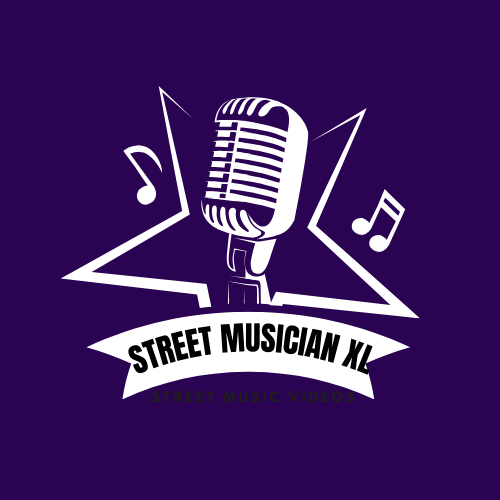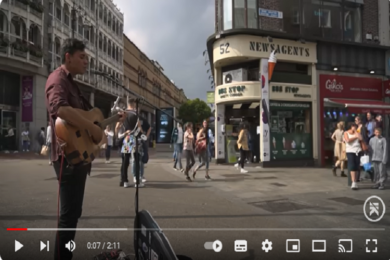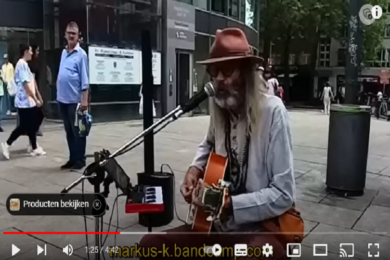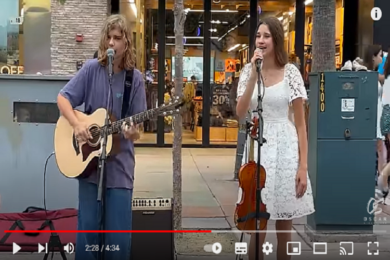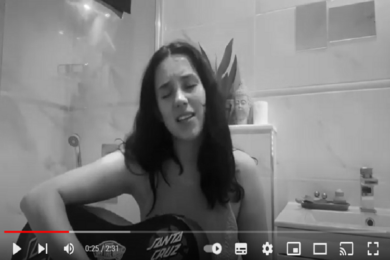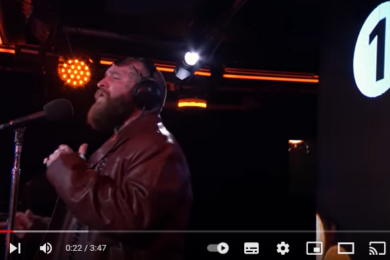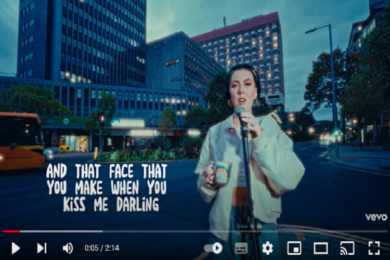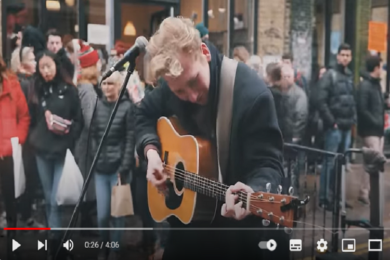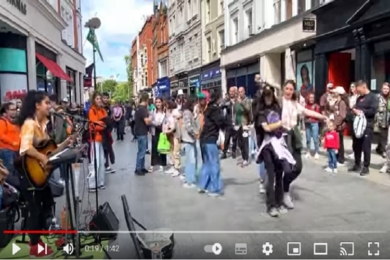About Rock Music
‘A Guitar, an Amp, and a City to Listen’: Rock Music and Street Performances. As a music genre, rock & roll has always relied upon dazzling live performances as much as on killer tunes and unforgettable riffs. For many of today’s most prominent names in rock music, their success came from their time spent performing on the street to anyone who would listen….
Rocking out in Public
If you’ve ever passed through Covent Garden in London, Santa Monica Pier in LA, or Bourke Street Mall in Melbourne, you’ll likely have been met by the sound of street performers enlivening the atmosphere with their music. Historically, street performance has been a foundation stone for many artists who wish to succeed in the music world. This is because it gives them their first opportunity to cut their teeth in front of an audience. Often, artists who perform on the streets bring nothing but a guitar, a PA (or amp), and a list of covers they think will help draw an audience.
For rock artists, in particular, nailing a good street performance can be absolutely crucial to ensuring they achieve rock star status. Rock music is a broad genre - but it has always been defined by its in-your-face attitude, its relentless energy, and its ability to grab the listener by the shoulders and make them pay attention - even if they didn’t originally intend to. In this way, rock artists who get people on busy city streets to stop and listen to them tend to do well later in their careers.
Street Musicians who became famous Rock Stars
Music history is packed full of rock stars who started off as plucky young street musicians, just trying to earn a few dollars, euros, or pounds by performing in the cities they grew up in. Many of these individuals didn’t believe they were destined for lives of fame, but they knew that by contending with the unpredictable nature of performing on the street, they’d sharpen their skills and find a place to showcase their talents to real people. The likes of Bob Dylan, Tracy Chapman, Ed Sheeran, and Hozier all started as once-anonymous street musicians (to name but a few).
Long before the wider world was introduced to his searingly poetic lyrics - and long before he became the voice of a generation - Bob Dylan began his musical journey as a performer in New York City's Greenwich Village, playing to students, hippies, and deadbeats in the area. Tracy Chapman, meanwhile, started her career as a street musician in Harvard Square, Cambridge, before her raw talent and emotionally charged performances caught the attention of record executives and led to her releasing some of the most potent music ever recorded.
Elsewhere, artists like Ed Sheeran and Hozier honed their performance abilities on the busy thoroughfare of Grafton Street in Dublin. There, these modern-day pop-rock icons vied for the attention of shoppers making their way through the bustling High Street, hoping to make some money from them - but also hoping to stand out from the crowd of other buskers with their blistering live performances.
For each of these rock artists, the element of street performance was incredibly formative. Every famous rock star has credited their days busking as having helped turn them into who they are today. For all of them, it allowed them to build a connection with fans in a way that couldn’t be achieved anywhere else.
Ed Sheeran himself admitted as much when he reflected on his busking days during an interview in 2012. He told the Irish Independent: "If you find success from building your own foundation, you don't need the record company. [My record company] could drop me tomorrow -- I've still got the fan base that got me here."
Street Performance in the Modern Age
Street performance has helped turn everyday musicians into rock stars for hundreds of years. (Seriously! Even classical musicians like Mozart and Franz Liszt - the rock stars of their era - performed to crowds on the streets of European cities in order to earn money as they travelled). Now, in the modern age of social media, live streaming, and video recording, street performance has taken on a new and exciting level of importance.
Thanks to sites like Facebook, Twitter, YouTube, TikTok, and Instagram, today’s street performers/future rock stars are able to reach a much wider audience - if the right phone camera happens to be pointed at them while they play.
Australian rock artist Tash Sultana is a prime example of a street performer who utilized the power of social media to propel herself from being an incredible local busker on the streets of Melbourne - to being a successful rock star who has sold out venues and arenas worldwide.
Similarly, UK rock band Dea Matrona - who deliver inspired covers of some of the most acclaimed (and difficult) rock songs of all time - achieved fame after their street performance videos began racking up 10s of millions of views online. Conclusion: Street Performance continues to inject life into the Rock & Rock Genre
For many wannabe rock artists who are just starting off on their music journey, street performance can often feel intimidating. Not only are you throwing yourself out there, but you’re also doing it in front of an audience made up of people who largely don’t care who you are or what you’re performing.
But this ‘Baptism of Fire’ way of doing things is often the best way for true musicians to learn the value of their music - as well as allowing them to see what it’s like to connect with people who do take the time to stop and listen to them.
Beyond that, street performers should remember that, in today’s world, most of the music we hear tends to be made and distributed online, then listened to in private through speakers or headphones. Street performance, by contrast, offers people the chance to break from that trend, to kick against it, to offer people beautiful, righteous rock sounds in a public place where they might not expect to hear it.
What’s more rock & roll than that?
